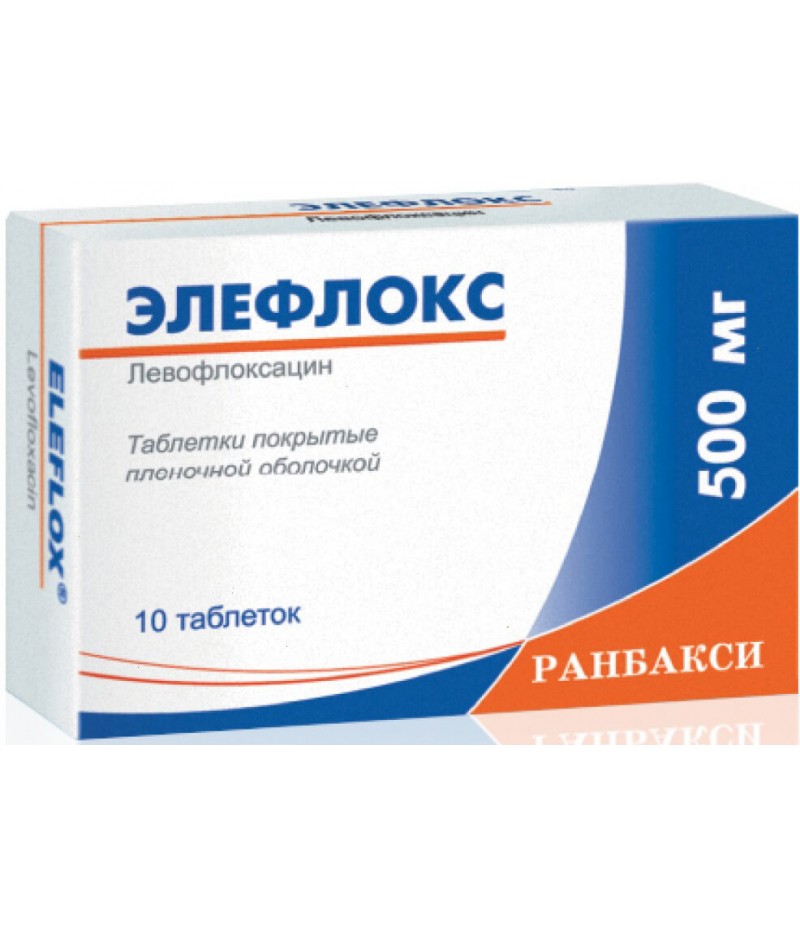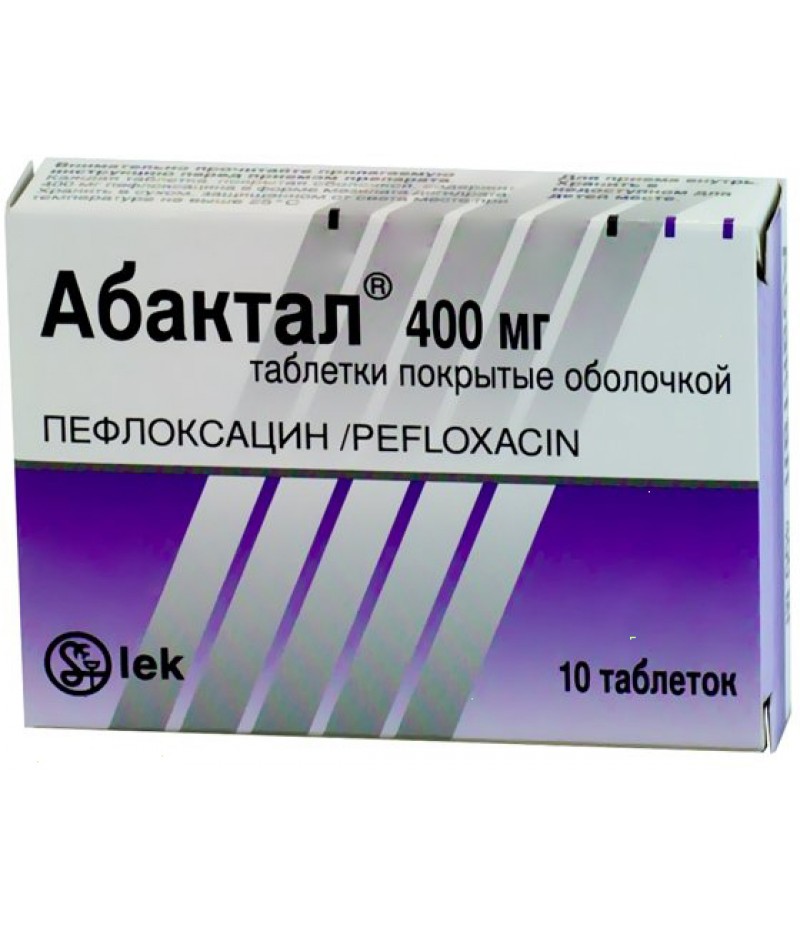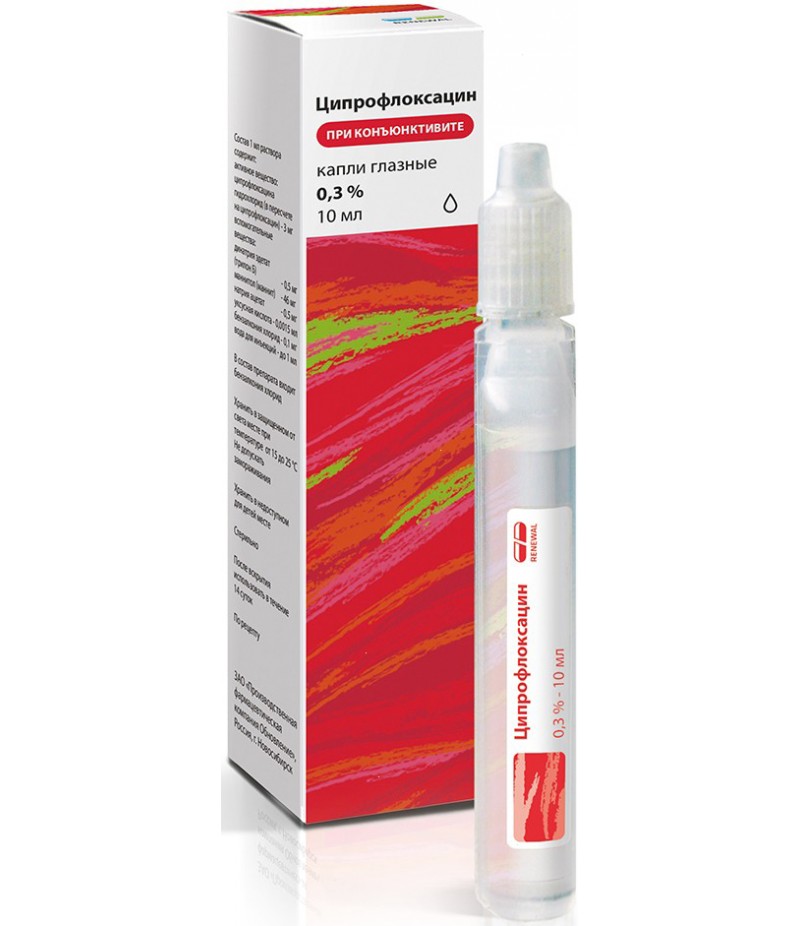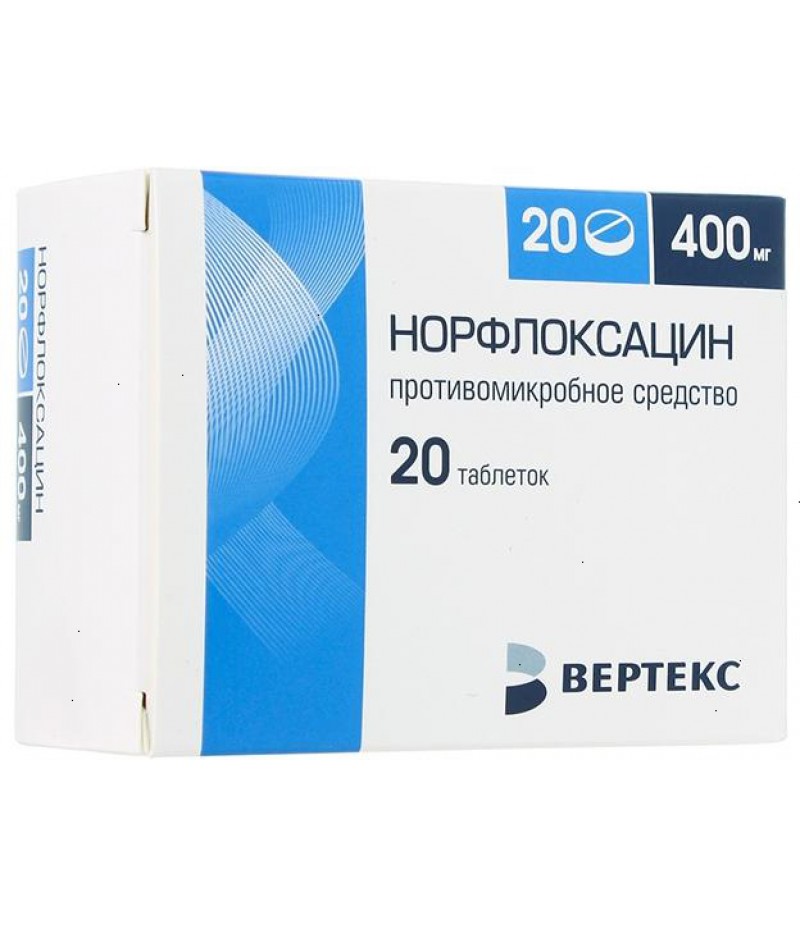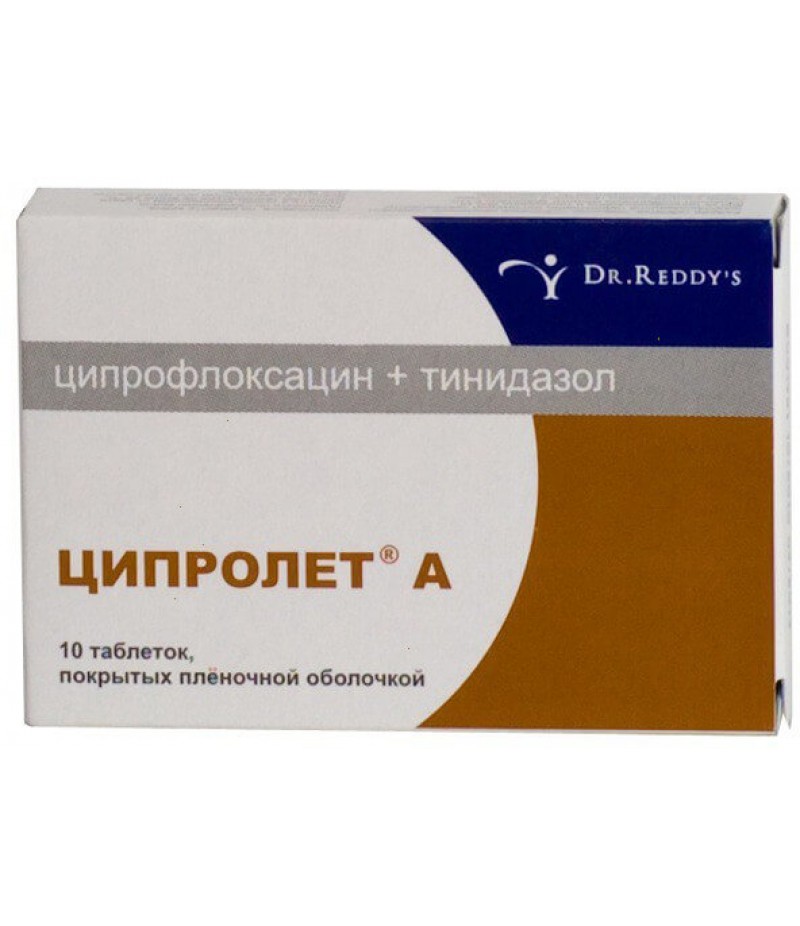Eleflox tabs 500mg #10
- $45.22
- 2 or more $44.50
- 3 or more $43.90
- Availability:In Stock
Instruction for ElefloxYou can buy Eleflox on this pageComposition1 tablet may include 250 or 500 mg of levofloxacin, the active ingredient. Additional ingredients: magnesium stearate, hypromellose, m
Tags: tabs
Instruction for Eleflox
You can buy Eleflox on this page
Composition
1 tablet may include 250 or 500 mg of levofloxacin, the active ingredient. Additional ingredients: magnesium stearate, hypromellose, microcellulose, polysorbate 80; crospovidone; Opadry OZV52874 - the shell.
100 ml of the solution includes 500 mg of levofloxacin, the active ingredient. Additional ingredients: anhydrous dextrose, hydrochloric acid, water d / in., Sodium hydroxide.
Form of issue
Eleflox is available in the form of tablets (250 mg, 500 mg), 5 or 10 pieces per pack, and in the form of an infusion solution (500 mg) of 100 ml in a vial.
pharmachologic effect
Bactericidal, antibacterial.
Pharmacodynamics and pharmacokinetics
Eleflox belongs to the group of fluoroquinolones and is an antibacterial synthetic drug with the active ingredient levofloxacin (isomer ofloxacin), which has a fairly broad antibacterial activity against most strains of pathological microorganisms.
The efficacy of levofloxacin is due to its ability to block DNA gyrase, inhibit DNA replication, disrupt cross-linking and supercoiling of DNA, induce severe morphological transformations in membranes, cell walls and cytoplasm of bacteria.
The following strains are sensitive to the effects of levofloxacin:
Anaerobic microorganisms: veylonella, bacteroidia fraigilis, propionic acid bacteria, bifidobacteria, fusobacteria, clostridia perfringence, peptostreptococci.
Gram-positive aerobic microorganisms: streptococci, corynebacteria diphtheria, listeria monocytogenes, enterococci, staphylococcus.
Gram-negative aerobic microorganisms: acinetobacter, citrobacter frowni, eikenelli corendence, escherichia coli, gardnerelli vaginalis, hemophilus ducrea, hemophilus influenza and parainfluenza, helicobacter pylori, klebsiella, moraxelli cataralis, morganella morgani, neisseria gonorrhea and meningococcus, pasteurellas, proteas, providensia, pseudomonas, salmonella, serration.
Other microorganisms: bartonella, chlamydia, lagionella, mycobacterium, mycoplasma, rickettsia, ureaplasma.
To the action of levofloxacin moderately sensitive the following strains:
Anaerobic microorganisms: bacteriiodes, prevotella, porphyromonads.
Gram-positive aerobic microorganisms: corynebacterium, enterococcus fecium, epidermal and hemolytic staphylococci.
Gram-negative aerobic microorganisms: burkholderii sepation, Campylobacter vegini and coli.
The following strains are resistant to levofloxacin:
Alkaligenes, corynebacteria, methicillin-resistant staphylococci, microbacterium avium.
With oral intake, regardless of food, levofloxacin is absorbed quickly and practically in its entirety. A dose of 500 mg provides almost 100% bioavailability; Tmax - 1.3 hours; Cmax - 5.2-6.9 μg / ml; T1 / 2 - 6-8 hours.
With plasma proteins binds to 30-40%. It has good penetrating ability in relation to such tissues and organs as bone tissue, lungs, urogenital organs, bronchial mucosa, cerebrospinal fluid, sputum, prostate gland, alveolar macrophages, polymorphonuclear leukocytes.
A small part of levofloxacin is deacetylated and / or oxidized in the liver and, for the most part, by tubular secretion and glomerular filtration, is excreted by the kidneys.
Indications for use
Infectious-inflammatory diseases, caused by microorganisms sensitive to levofloxacin:
bacterial prostatitis;
infection of the lower respiratory tract (community-acquired pneumonia, complications of chronic bronchitis);
intra-abdominal infections;
lor infection (including acute sinusitis);
infection of the kidneys and urinary tract (including acute pyelonephritis);
infections of soft tissues and skin (furunculosis, abscess, festering atheromas);
treatment of tuberculosis resistant to other drugs (complex therapy).
Contraindications
pathology of tendons, with previous treatment with drugs from the quinolone group;
pregnancy;
epilepsy;
age up to 18 years;
hypersensitivity;
breast-feeding.
Carefully:
insufficiency of glucose-6-phosphate dehydrogenase;
elderly age;
kidney pathology.
Side effects
GIT:
increased activity of hepatic enzymes;
nausea;
a decrease in appetite;
diarrhea;
digestive disorders;
dysbiosis;
vomiting;
feeling of pain in the abdomen;
increased serum bilirubin level;
hepatitis;
occasionally observed diarrhea with bloody discharge, which can be a symptom of passing inflammatory processes in the intestine, including pseudomembranous colitis.
Central nervous system:
anxiety;
headache;
drowsiness;
feeling dizzy;
sleep disorders;
psychotic manifestations (hallucinations);
depression;
paresthesia of the hands;
excited state;
sensation of trembling;
confusion of consciousness;
disorders of the hearing and sight;
convulsions;
impairment of smell and taste;
decreased tactile sensitivity.
Metabolism:
hypoglycemia (nervousness, increased appetite, tremors, hyperhidrosis), which is especially important with concurrently observed diabetes mellitus.
The cardiovascular system:
change in blood pressure in the direction of its decrease;
tachycardia;
vascular collapse;
atrial fibrillation;
lengthening the gap QT.
Hematopoiesis:
eosinophilia;
hemorrhage;
leukopenia;
thrombocytopenia;
neutropenia;
agranulocytosis;
pancytopenia;
hemolytic anemia.
Musculoskeletal system:
myalgia;
muscle weakness;
affections of tendons;
arthralgia;
rupture of tendons;
rhabdomyolysis.
Urinary system:
hypercreatininaemia;
interstitial nephritis;
acute kidney failure.
Allergic manifestations:
redness and itching of the skin;
hives;
suffocation;
bronchospasm;
Stevens-Johnson syndrome;
allergic pneumonitis;
exudative erythema multiforme;
anaphylactic shock;
Lyell's syndrome;
swelling of the mucous and skin;
vasculitis.
Others:
superinfection;
asthenia;
fever;
aggravation of porphyria;
photosensitization.
Eleflex, user's manual
With oral and infusional use of Eleflox, its plasma content remains in equilibrium, and therefore both ways of using the drug are interchangeable.
In the form of tablets, Eleflox is taken orally (orally), best before meals, at a frequency of 1-2 times in 24 hours. Dosages are determined in accordance with the severity of the infection, the nature of its course and the sensitivity of a pathological pathogen.
Typically, the following treatment regimens are used to treat patients with CC (creatinine clearance) greater than 50 mL / min.
Complications of chronic bronchitis require a daily dose of levofloxacin from 250 to 500 mg, with a duration of 7-10 days.
Treatment of acute sinusitis takes place in a daily dose of Eleflox 500 mg, with a duration of 10-14 days.
Therapy for community-acquired pneumonia requires a 1-2-fold intake of the drug at 24 hours in a dose of 500 mg, with a duration of 7-14 days.
Infectious diseases of the urinary tract occurring complications (e.g., pyelonephritis) require daily dosing of levofloxacin 250 mg, with a duration of 7-10 days (in case of severe disease during the dose can be increased).
Infectious pathologies of the urinary tract (uncomplicated) are treated for 3 (sometimes 5) days in a daily dose of 250 mg.
Treatment of bacterial prostatitis can take up to 28 days with Eleflex using 500 mg per 24 hours.
Intra-abdominal infection requires a daily application of 500 mg of the drug, for 7-14 days (in combination antibiotic therapy, which affects the anaerobic flora).
Therapy of Infectious soft tissue and skin lesions performed at a dosage of 250-500 mg of levofloxacin with receiving intervals 1-2 times per 24 hours, for 7-14 days.
Treatment of tuberculosis resistant to other drugs (in combination with other drugs) is carried out in a daily dose of 500 mg with a single or double intake, for up to 3 months.
In kidney pathologies, depending on the CK, an adjustment of the doses of Eleflicks is necessary:
at KK of 50-20 ml / min the first dosage of 250 mg is applied, then switching to a daily dose of 125-250 mg in 1-2 doses;
with KK 10-19 ml / min the first dose of 500 mg is applied, then switching to the daily dose of 125 mg, taken once in 12-48 hours;
with CC less than 10 ml / min (hemodialysis, peritoneal dialysis) apply a first dose of 500 mg, subsequently passing to a daily dose of 125 mg taken once in 24-48 hours.
The Eleflox solution is intended for use in the form of infusions (droppers), with a duration of their use for at least 60 minutes per 100 ml (1 bottle). Further, in accordance with the general condition of the patient, you can switch to taking the tablets in a similar dosage.
After the patient undergoes hemodialysis or peritoneal dialysis, the use of additional doses of levofloxacin is not required.
Correction of dosing in liver pathologies and in old age is not carried out.
The use of Eleflox should be carried out for a minimum of 48-72 hours (before the actual elimination of pathogens or disappearance of all symptoms).
If you miss the time of taking the next dose, you need to take (enter) the next pill (vial) as soon as possible, then go to the prescribed therapy regimen.
Overdose
In case of an overdose, Eleflox mainly observed symptomatology from the side of the central nervous system (feeling dizzy, confused, convulsive seizures similar to epileptic ones), increasing the QT interval, as well as digestive disorders (dyspepsia, nausea, vomiting) and lesions of its mucous erosive genesis.
Therapy of these conditions is symptomatic. Effective methods for removing levofloxacin are hemodialysis and peritoneal dialysis.
Interaction
Parallel use of Eleflox and drugs, reducing convulsive activity (Fenbufen, Theophylline and other NSAIDs) can lead to a decrease in convulsive activity of a pronounced nature.
In the case of combined treatment with vitamin K antagonists, blood coagulability should be monitored.
The efficacy of levofloxacin is significantly reduced when combined therapy with sucralfate, iron salts and antacid agents containing aluminum or magnesium, and therefore the time interval between the administration of these drugs should be at least 120 minutes.
Under the influence of probenecid and cimetidine, the excretion of Elephlox by the kidneys slows down.
Levofloxacin slightly elongates T1 / 2 Ciclosporin.
Simultaneous use of Eleflox with hypoglycemic drugs requires strict control of plasma glucose (hypo- or hyperglycemia).
Parallel administration of glucocorticoids increases the possibility of rupture of tendons.
The infusion solution of Eleflox is compatible with solutions: Dextrose (5%), Sodium chloride (0.9%), Ringer (2.5%), and combined solutions for parenteral nutrition, containing electrolytes, carbohydrates and amino acids.
Eleflox in the form of a solution can not be combined with alkaline solutions (for example, with sodium hydrogencarbonate) and Heparin.
Storage conditions
Both forms of medicines should be stored in a dark room at a temperature of up to 25 ° C.
Shelf life - 24 months.
special instructions
Due to the possibility of defects in articular cartilage, Eleflox is not prescribed for treatment of patients under the age of 18 years.
Elderly patients often suffer from impaired renal function, which should be considered when prescribing therapy.
In the case of severe pneumonia, treatment with Eleflox alone may not lead to optimal results. Hospital infections, triggered by certain microorganisms (Pseudomonas aeruginosa) may require the use of combination therapy.
Patients with anamnesis who have information about brain damage (trauma, stroke), with the use of Eleflicks increased the possibility of forming convulsive seizures.
When using the infusion solution, it is necessary to strictly follow the recommendations for its administration (100 ml for a minimum of 60 minutes), due to the fact that at the time of administration, a decrease in blood pressure and increased heart rate were noted. Occasionally, a sharp and significant fall in blood pressure can lead to vascular collapse, and the observed sharp drop in blood pressure requires an immediate cessation of infusion.
When using Eleflox very rarely noted the effects of photosensitization, therefore, when passing therapy, patients are not recommended to be in the sun or under artificial ultraviolet.
Sometimes the use of levofloxacin, especially in elderly patients and with the simultaneous administration of glucocorticoids, leads to the formation of tendonitis (most often Achilles tendon), which can cause the rupture of the tendon itself. In case of suspicion of the formation of this pathology, levofloxacin therapy is immediately stopped and an adequate treatment of the tendons affected by the lesion is prescribed.
With the development of pseudomembranous colitis, Eleflox should be abolished and appropriate treatment of colitis should be selected without the use of drugs that suppress intestinal motility.
Therapy with fluoroquinolones, with insufficiency of glucose-6-phosphate dehydrogenase may cause hemolysis (destruction of erythrocytes), which requires a special approach to the treatment of patients with this pathology.
In connection with the possibility of occurrence of such complications as: stupor, dizziness, visual disturbances, drowsiness, etc. should be abandoned driving and practicing dangerous and / or accurate work.
EleFlox analogues
Abaktal;
Norfloxacin;
Ciprolet;
Ciprofloxacin.
Children
Eleflox is not used to treat patients who are under 18 years of age.
In pregnancy and lactation
The implementation of therapy during breastfeeding and pregnancy is prohibited.
Reviews about Eleflox
Most patients give a high positive evaluation of the effectiveness of the drug Eleflex. Levofloxacin copes with a significant number of infectious diseases and is often prescribed by doctors when it is necessary to cover a variety of possible pathological pathogens. Unfortunately, some patients note the occurrence of various, inherent in this drug, side effects, most often mildly expressed and passing after the termination of therapy.

